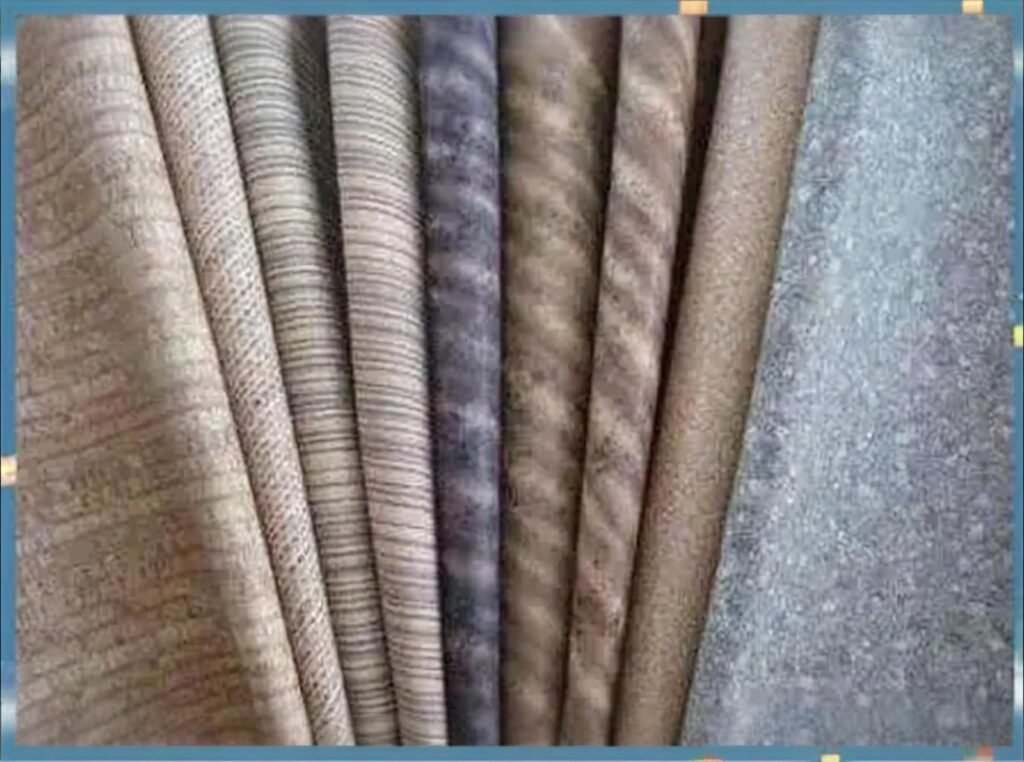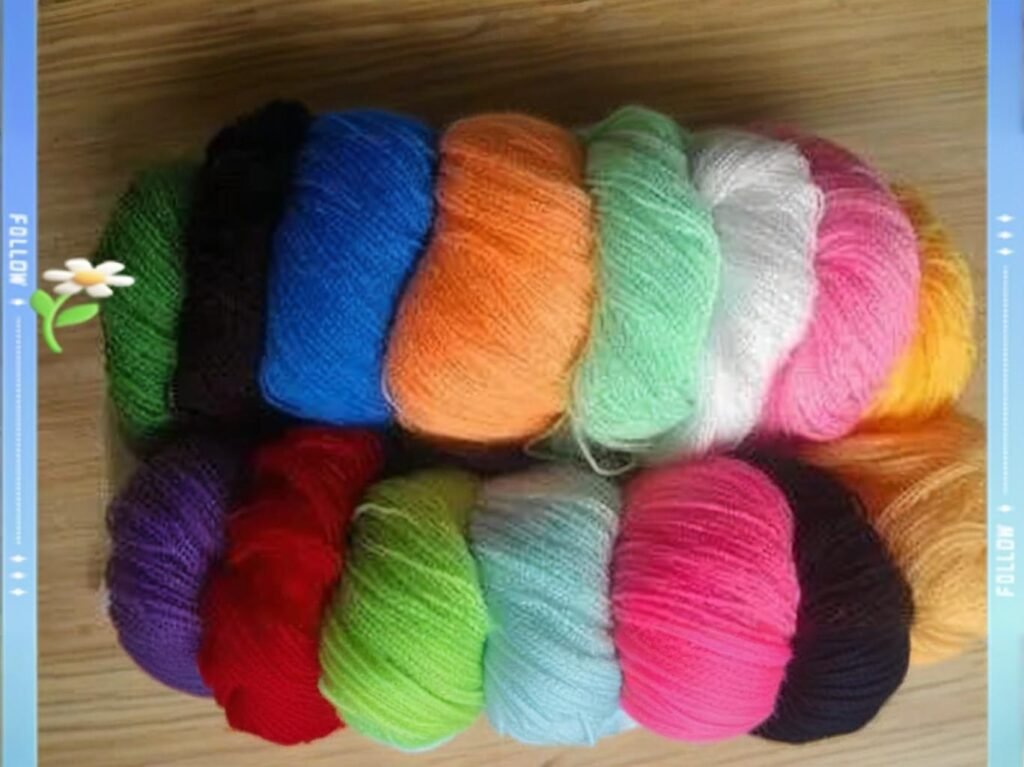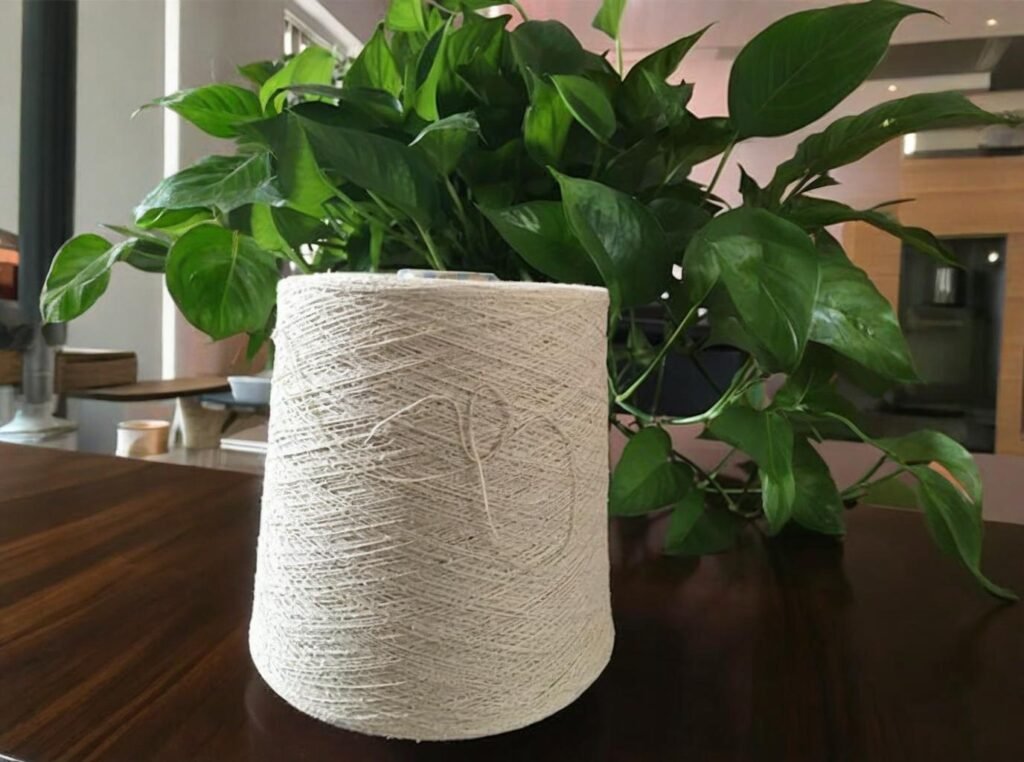Not all materials can survive the harsh punishment of the sun. While many synthetic fabrics or plastics break down quickly under ultraviolet radiation, acrylic stands out for its extraordinary UV resistance—making it a go-to choice for outdoor furniture, signage, canopies, marine covers, and architectural textiles.
Acrylic is a synthetic polymer derived from acrylonitrile, known for its excellent UV stability, weather resistance, and long-term colorfastness. Its unique molecular structure and ability to be solution-dyed make it exceptionally durable in UV-exposed environments.
To put this into perspective: a beachfront hotel in the Caribbean that switched to solution-dyed acrylic covers for their pool loungers reported over 5 years of color retention, compared to just 18 months with polyester covers. That kind of performance doesn’t happen by accident—it’s the result of engineering a material to survive and thrive in extreme sun exposure.
This article explores acrylic from its core chemical properties to its UV-specific advantages, comparing it to alternative materials and helping industrial buyers make informed sourcing decisions.
What Is Acrylic Material and How Is It Manufactured?

Acrylic is a synthetic fiber made primarily from polyacrylonitrile, a compound derived from petroleum. It’s manufactured through a spinning process that transforms liquid polymers into solid filaments, followed by heat-setting and finishing steps that stabilize the material for various applications—including textiles, plastics, and sheets.
Acrylic’s Origin and Production Process
Raw Material: Acrylonitrile This monomer is derived through the ammoxidation of propylene and ammonia. The result is polyacrylonitrile (PAN), the base of acrylic fiber.
Polymerization & Spinning Techniques Acrylic fibers are made using either:
- Wet spinning: The polymer is dissolved in a solvent and extruded into a coagulation bath.
- Dry spinning: The polymer solution is extruded into hot air where the solvent evaporates.
| Spinning Type | Benefits | Limitations |
|---|---|---|
| Wet Spinning | Stronger molecular alignment | Slower, more solvent-heavy |
| Dry Spinning | Faster, lower energy consumption | May yield slightly weaker yarn |
Post-Spinning Heat Treatment Fibers are stretched and heat-set to stabilize them. This makes the material less prone to shrinkage and improves its mechanical properties.
Modification Options Depending on the intended use, acrylic may be:
- Solution-dyed for UV resistance
- Blended with modacrylics for flame retardancy
- Coated with PU/PVC for waterproofing
Industry Insight: According to the Textile Exchange, over 90% of solution-dyed acrylic used in outdoor textiles undergoes wet spinning followed by heat stabilization at temperatures above 130°C.
How Does Acrylic React to Sunlight and UV Exposure?
Acrylic is inherently resistant to UV degradation due to its molecular structure. The chemical bonds in polyacrylonitrile are stable under UV light, which prevents them from breaking down or yellowing like other synthetics.
UV Resistance in Practice
UV Degradation Explained Materials degrade under UV when photons break the chemical bonds in the polymer chain. This leads to fading, brittleness, and surface cracking.
Acrylic’s carbon-nitrogen backbone resists this type of degradation better than polyester or nylon.
Colorfastness & UV Stability Solution-dyed acrylic fibers integrate pigment during fiber creation, not as a surface layer. This makes the color part of the polymer, vastly improving fade resistance.
| Fabric Type | UV Stability (ASTM G155) | Fade After 1000 Hours |
|---|---|---|
| Acrylic (solution-dyed) | Grade 4–5 | <10% loss |
| Polyester (piece-dyed) | Grade 2–3 | 25–40% loss |
| Nylon | Grade 1–2 | 40–60% loss |
Temperature Resistance Acrylic also resists heat-induced warping and distortion better than polyethylene or PVC. It holds its shape well under continuous sun exposure and fluctuating temperatures.
Case Study: UV Testing in Dubai An architectural shading company in Dubai tested solution-dyed acrylic for their pergolas under ASTM G155 UV conditions. After 2000 hours:
- Color loss: Only 6%
- Fabric tensile strength: 92% retained
- Customer satisfaction: +23% over previous poly blends
Key Takeaway: For products that spend their lives under the sun, acrylic isn’t just an option—it’s a strategic investment in product longevity.
What Are the Key Properties That Make Acrylic UV Resistant?

Acrylic’s standout performance in UV-exposed environments is largely due to its chemical structure, pigmentation method, and fiber morphology. These properties collectively allow acrylic to maintain its color, strength, and flexibility even after prolonged exposure to sunlight and extreme weather.
Dissecting the UV-Resistant Advantages of Acrylic
Stable Molecular Structure Polyacrylonitrile has a carbon-nitrogen backbone that resists the photo-oxidation commonly caused by ultraviolet radiation. This inherent molecular integrity keeps the material from becoming brittle or yellow over time.
Solution-Dyed Pigmentation Unlike piece-dyeing (where color is applied post-production), solution-dyeing locks pigment inside the polymer during extrusion. As a result, UV rays cannot strip color from the surface because the color runs through the entire fiber.
| Dyeing Technique | UV Fade Resistance | Color Penetration | Typical Usage |
|---|---|---|---|
| Solution-dyed acrylic | ★★★★★ | 100% | Outdoor cushions, awnings |
| Yarn-dyed polyester | ★★☆☆☆ | 30–40% | Indoor curtains |
| Printed cotton | ★☆☆☆☆ | Surface-only | Decorative pillows |
Low Moisture Absorption Acrylic absorbs very little moisture (1.5–2% compared to cotton’s 7–8%), reducing the risk of hydrolysis or mildew, which is particularly useful for outdoor and marine applications.
Thermal and Dimensional Stability Acrylic resists thermal distortion better than polyolefin or PVC-coated materials, making it suitable for applications where fabrics are constantly exposed to sun and heat.
Color Retention and Cleanability Solution-dyed acrylic fabrics retain 85–95% of their original color even after 1500 hours of UV exposure (per ISO 105-B02 testing). Additionally, acrylic is easy to clean and maintain, requiring only mild soap and water to keep its appearance.
Real-World Case: A French outdoor café chain retrofitted its 100+ patio umbrellas with solution-dyed acrylic fabric. Over a three-year period, customer surveys cited improved brand perception due to vibrant color consistency, while maintenance costs dropped 40%.
Which Industries Commonly Use Acrylic in Outdoor or UV-Exposed Products?
Acrylic’s UV resistance, lightweight nature, and soft yet durable texture have made it a top choice in a wide variety of B2B industrial and commercial sectors. From marine and architectural to automotive and advertising, acrylic is a staple where long-term sun exposure is unavoidable.
Acrylic’s Industrial Applications and Use Cases
Outdoor Furniture & Hospitality One of the most visible uses of acrylic fabric is in outdoor seating for restaurants, resorts, cafes, and pool decks. Brands like Sunbrella® have set benchmarks using solution-dyed acrylic for cushions, drapes, and lounge covers that endure year after year.
| Industry | Acrylic Use Case | Benefits |
|---|---|---|
| Resorts & Hotels | Lounge cushions, umbrellas | Colorfast, mold-resistant |
| Cafés & Restaurants | Outdoor seating & awnings | UV-proof, easy to clean |
| Cruise Lines | Deck furniture, rail covers | Saltwater and sun-resistant |
Marine Industry Boats, yachts, and marina infrastructure demand fabrics that can withstand salt, sun, and wind. Acrylic’s low water retention and anti-mildew capabilities make it ideal for:
- Bimini tops
- Boat seat covers
- Sail bags
- Dockside equipment enclosures
Case Insight: A US-based yacht builder exclusively uses marine-grade solution-dyed acrylic for exterior seating. Their client surveys revealed a 60% increase in long-term customer satisfaction compared to previous PVC-coated nylon.
Architectural & Shade Structures From pergolas to retractable awnings and carport canopies, architectural designers choose acrylic because of its excellent balance of flexibility, strength, and aesthetics. Many building materials also require compliance with NFPA 701 and ISO 105-B04—both of which high-quality acrylics can meet.
Automotive and RV Industry While polyester is common in automotive interiors, acrylic is preferred for sun visors, roof linings, and convertible soft tops where long-lasting color and sunlight resistance are essential.
Outdoor Advertising Billboards, flags, and fabric signage exposed to the elements often fail due to UV fading. Acrylic-coated or solution-dyed banners provide higher ROI through longer-lasting graphics and brighter colors.
| Sector | Common Acrylic Products | Why Acrylic Is Chosen |
|---|---|---|
| Outdoor Hospitality | Cushions, umbrellas | Fade-proof and breathable |
| Marine | Upholstery, enclosures | Salt + UV protection |
| Architectural Projects | Awnings, shade sails | Structural integrity + design flexibility |
| Automotive | Visors, roof liners | Thermal and UV performance |
| Event Advertising | Stage backdrops, printed banners | Long-term visual impact |
Quote from Industry Expert: “Acrylic outperforms almost every synthetic fabric we’ve used when it comes to retaining vibrant color and elasticity in high-UV markets like the Middle East.” — Product Director, UAE-based Awning Manufacturer
Is Acrylic More UV Stable Than Other Synthetic Materials?

Yes—acrylic is one of the most UV-stable synthetic materials available, outperforming polyester, nylon, polypropylene, and PVC in long-term outdoor applications. Its resistance to photodegradation, color fading, and molecular breakdown is unmatched among common industrial fabrics.
Comparative UV Performance of Synthetic Materials
UV Degradation Mechanism When exposed to UV radiation, synthetic materials undergo photo-oxidation, leading to weakened molecular bonds, brittleness, yellowing, and fading. Materials with poor UV stability require coatings or frequent replacement, increasing total lifecycle cost.
Material-by-Material UV Comparison
| Material Type | UV Resistance Grade (ASTM G155) | Fade Resistance | Typical Outdoor Life Span | Notes |
|---|---|---|---|---|
| Solution-Dyed Acrylic | ★★★★★ | Excellent | 5–10 years | Best for fade resistance |
| Polyester | ★★☆☆☆ | Moderate | 1–3 years | Needs UV coating |
| Nylon | ★☆☆☆☆ | Poor | <1 year | Prone to yellowing |
| Polypropylene (PP) | ★★☆☆☆ | Low–Moderate | 1–2 years | UV inhibitors needed |
| PVC-coated fabrics | ★★☆☆☆ | Moderate | 2–4 years | Coating may crack under UV |
Field Report: A Dubai signage company tested acrylic, polyester, and PVC-coated banners under direct sun for 6 months. Results showed:
- Acrylic retained 90% vibrancy
- Polyester faded by 40%
- PVC cracked and shrank in 45°C heat
Why Acrylic Performs Better
- Tight Polymer Chains: Polyacrylonitrile resists UV photon-induced bond breaks
- Integrated Pigmentation: Solution-dyed acrylic has pigment embedded, not layered
- Lower Moisture Absorption: Prevents hydrolytic breakdown
- Stiff Yet Flexible: Retains structural integrity without embrittlement
Key Takeaway: While coatings can enhance other materials temporarily, acrylic delivers built-in, long-term UV stability without constant treatment or replacement.
How Do Coating and Dyeing Processes Affect Acrylic’s UV Performance?
Acrylic’s UV resistance can be significantly influenced by how it is dyed and what finishing coatings are applied. The method of pigmentation, plus optional chemical treatments, determines how long it retains appearance and structural performance outdoors.
Processing Variables That Influence UV Durability
Solution-Dyeing vs Piece-Dyeing
- Solution-Dyeing: Color pigments are mixed into the polymer before extrusion. This ensures the entire fiber is colored from the inside out.
- Piece-Dyeing / Top-Dyeing: Color is applied to the surface of pre-formed fabric or yarn.
| Dyeing Method | Color Penetration | UV Fade Resistance | Typical Use |
|---|---|---|---|
| Solution-Dyeing | 100% (core-colored) | Excellent (Grade 5) | Outdoor textiles, awnings |
| Piece-Dyeing | Surface only | Poor (Grade 2–3) | Indoor decor, limited outdoor |
Case Comparison: An outdoor cushion brand used solution-dyed acrylic for its premium line and yarn-dyed polyester for its entry-level line. After 18 months:
- The acrylic line still passed ISO 105-B02 colorfastness tests
- The polyester line failed, with 45% visual fading reported by customers
Impact of Protective Coatings
- PU (Polyurethane) Coating: Adds water and UV resistance, good for breathable covers
- PVC (Polyvinyl Chloride) Coating: Enhances waterproofing and abrasion resistance, but can reduce flexibility over time
- Fluorocarbon or Silicone Coatings: Improve dirt repellency and further reduce photodegradation
| Coating Type | UV Shield | Breathability | Stiffness | Ideal Applications |
|---|---|---|---|---|
| PU | Moderate | High | Low | Patio covers, marine cushions |
| PVC | High | Low | High | Awnings, truck tarps |
| Silicone/FC | Moderate | Moderate | Moderate | High-end furniture, shading systems |
Antimicrobial & Anti-mildew Additives Especially for humid or marine climates, coatings with silver ions or zinc oxide can also prevent mildew and mold—factors that contribute indirectly to material degradation when combined with UV.
Best Practice Tip: When sourcing UV-stable acrylic, look for solution-dyed + PU-coated + mildew-resistant finishes to maximize lifespan across outdoor environments.
What Tests and Certifications Prove Acrylic’s UV Resistance?

To ensure acrylic fabric meets industrial standards for UV performance, manufacturers and B2B buyers rely on a range of standardized lab tests and certifications that quantify its resistance to sunlight, weathering, and fading.
How Acrylic’s UV Stability Is Verified
Key Testing Standards
| Test Name | Description | Common Requirement (Pass Grade) |
|---|---|---|
| ASTM G155 | Accelerated weathering test using xenon arc lamps | Colorfastness Grade 4 or above |
| ISO 105-B02 | Measures colorfastness to artificial light | Grade 6–7 for outdoor use |
| AATCC TM16 | Evaluates fading under UV exposure | Grade 4–5 preferred |
| NFPA 701 | Flame propagation test for fabrics used in public spaces | Required for shading and architectural |
| EN 13561 / ISO 2286 | Tests tensile strength + UV/weather resistance for technical awning fabrics | Minimum 5,000 hours outdoor durability |
Insight: Solution-dyed acrylic fabrics routinely pass ASTM G155 with less than 10% color loss after 1,000 hours, compared to up to 50% loss for polyester in the same test.
Colorfastness Grading Table (ISO 105-B02)
| Grade | Meaning | Application Suitability |
|---|---|---|
| 1 | Very poor | Not suitable |
| 2 | Poor | Temporary or disposable fabrics |
| 3 | Moderate | Short-term indoor use |
| 4 | Good | Moderate outdoor exposure |
| 5 | Very good | Long-term outdoor use |
| 6–7 | Excellent | Marine, desert, tropical use |
Certifications to Look for When Sourcing
- OEKO-TEX® Standard 100 – Ensures no harmful substances
- GREENGUARD Gold – For low chemical emissions (important for indoor/outdoor hybrid use)
- REACH / RoHS Compliance – Required for EU and environmentally regulated markets
- ISO 9001 – Ensures consistent production and quality control
Real-World Example: A commercial canopy supplier in Australia requires all fabrics to pass ISO 105-B02 Grade 6 and NFPA 701, which makes solution-dyed acrylic their only viable option for retail sunshades.
How Can B2B Buyers Source UV-Stable Acrylic Materials from Reliable Suppliers?
Sourcing acrylic for UV-exposed applications is not just about finding fabric—it’s about working with manufacturers who understand performance specs, customization, and certification standards. B2B buyers need responsive, compliant, and scalable partners.
Strategic Sourcing for UV-Stable Acrylic Fabric
Define Your Requirements Clearly
Before reaching out to suppliers, prepare a checklist that includes:
- UV exposure environment (e.g. coastal, desert, high altitude)
- Required certifications (ASTM G155, ISO 105-B02, etc.)
- Desired features (e.g. flame retardant, PU coating, antimicrobial)
- MOQ (minimum order quantity)
- Lead time expectations
- Branding options (custom color, logo weaving, packaging)
Evaluate the Manufacturer’s Capabilities
| Sourcing Factor | SzoneierFabrics Capability |
|---|---|
| Solution-dyeing in custom colors | ✅ |
| PU/PVC/FC coating options | ✅ |
| Free sampling & fast prototyping | ✅ |
| OEKO-TEX, REACH certification | ✅ |
| MOQ as low as 100 meters | ✅ |
| Lead time 10–15 days for bulk | ✅ |
Request Technical Data Sheets (TDS) This should include:
- UV test results (ASTM/ISO standards)
- Fabric weight (GSM)
- Tensile and tear strength (EN/ISO 13934)
- Fade resistance grades
- Fire-retardant reports (if needed)
Ask for Case Studies or References Trustworthy suppliers will have real case studies or references showing how their acrylic fabrics perform in actual environments.
Client Success Story: A UAE-based hotel chain sourced custom-colored acrylic patio umbrellas from SzoneierFabrics. Each fabric passed ASTM G155 and ISO 105-B02 Grade 6. After 2 years, 90% of the umbrellas still looked brand new. Repeat order followed for 3 additional properties.
Why Acrylic Is the Smart Choice for UV-Exposed Products
If your business involves outdoor products—whether they’re lounge cushions, marine covers, banners, or architectural awnings—acrylic is your best defense against the sun. Its unmatched UV resistance, long-lasting colorfastness, and stable structural integrity make it the most cost-effective choice over time.
Other synthetics may be cheaper upfront, but frequent replacements, maintenance, and customer dissatisfaction will cost you more in the long run. When treated and sourced properly, solution-dyed acrylic fabrics can deliver 5–10 years of outdoor performance—with minimal fading, shrinking, or cracking.
Looking for a Trusted Acrylic Fabric Manufacturer?
SzoneierFabrics is your ideal B2B partner for sourcing custom UV-resistant acrylic materials. With years of experience serving international buyers, we offer:
- ✅ Solution-dyed acrylic in custom colors
- ✅ Free design and fast sampling
- ✅ Low MOQ and short lead time
- ✅ Certifications: OEKO-TEX®, REACH, ISO 105-B02, ASTM G155
- ✅ Global logistics support and 100% quality control
Get in touch today for samples or a quotation。

